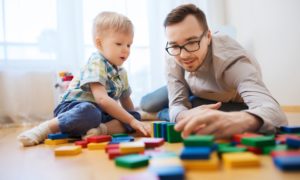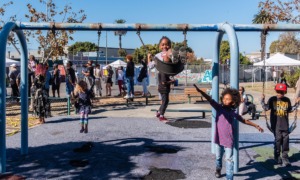Author(s): GLSEN
- Joseph G. Kosciw, Ph.D.
- Emily A. Greytak, Ph.D.
- Adrian D. Zongrone, M.P.H.
- Caitlin M. Clark, Ph.D.
- Nhan L. Truong, Ph.D.
Published: Oct. 15, 2018
Report Intro/Brief:
“The GLSEN National School Climate Survey is our flagship report on the school experiences of LGBTQ youth in schools, including the extent of the challenges that they face at school and the school-based resources that support LGBTQ students’ well-being. The survey has consistently indicated that specific school-based supports are related to a safer and more inclusive school climate, including: supportive educators, LGBTQ-inclusive curriculum, inclusive and supportive policies, and supportive student clubs, such as Gay-Straight Alliances or Gender and Sexuality Alliances (GSAs).
The full GLSEN 2017 National School Climate Survey report includes information on LGBTQ middle and high school students’ experiences, including:
- Hearing biased language, from both students and educators
- Experiences of harassment and assault
- Anti-LGBTQ discrimination
- Effects of a hostile school climate on educational outcomes and psychological well-being
- The availability and utility of supportive school resources
This report also examines demographic and school differences in students’ experiences, as well as changes in school climate over time. In addition, for the first time, this installment of GLSEN’s National School Climate Survey also includes insights on LGBTQ-inclusive sex education, student activism, parent advocacy, experiences of LGBTQ students with disabilities, and experiences of LGBTQ immigrant students.
Among the many findings within the 2017 National School Climate Survey, are:
- Overall in 2017, we see homophobic remarks and victimization leveling off, after years of measured improvements. Worse, we have seen a steady increase in youth reporting negative remarks about transgender people, and a recent upward trend in the frequency of staff making negative remarks about gender expression.
- The vast majority of LGBTQ students (87.3%) experienced harassment or assault based on personal characteristics, including sexual orientation, gender expression, gender, religion, race and ethnicity, and disability. Seven in ten LGBTQ students (70.1%) experienced verbal harassment at school based on sexual orientation, more than half based on gender expression (59.1%) or gender (53.2%).
- More than a third of LGBTQ students (34.8 %) missed at least one day of school in the last month because of feeling unsafe at school, and at least two in five students avoided bathrooms (42.7%) and locker rooms (40.6%).
- The frequency of verbal harassment based on sexual orientation did not change from 2015 to 2017; however, physical harassment and assault based on sexual orientation did continue to decline in 2017.
- The frequency of verbal harassment based on gender expression increased from 2015 to 2017, after years of decline, and there were no improvements in reports of physical harassment and assault based on gender expression from 2015 to 2017.
- Hostile school climates negatively affect LGBTQ students’ mental health and educational outcomes. LGBTQ students who experienced high levels of anti-LGBTQ victimization were nearly twice as likely to report they do not plan to pursue post-secondary education. Also, LGBTQ students who experienced high levels of anti-LGBTQ victimization and discrimination had lower GPAs, lower self-esteem, and higher levels of depression.
- School-based supports continue to have a positive effect on school climate. School staff supportive of LGBTQ students, GSAs, LGBTQ-inclusive curriculum, and comprehensive and supportive policies are all related to safer schools and better educational outcomes. Yet LGBTQ students report that most of these supports are not available to them.”
>>> CLICK HERE to see all of Youth Today’s REPORT LIBRARY






























